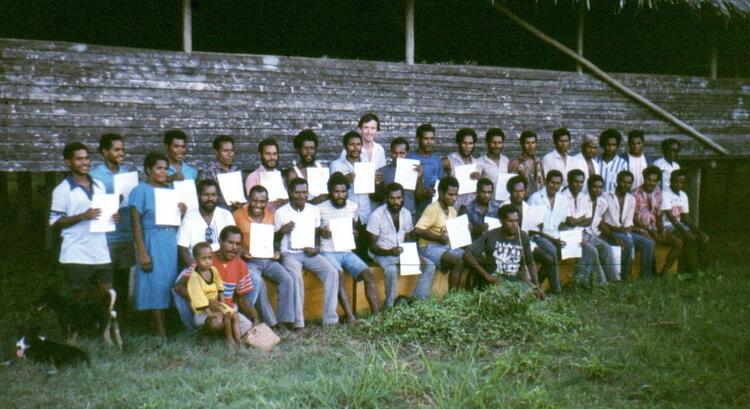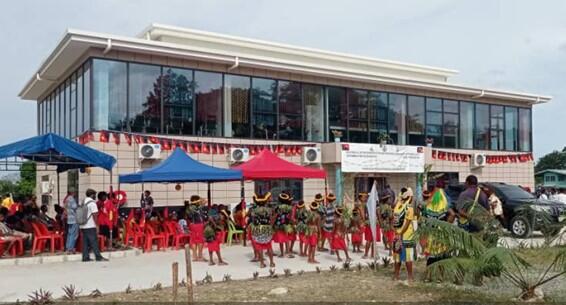Early initiative
Arjen and Maija Lock are members of SIL international and started the study and analysis of the Abau Language in 1982. They ran a couple of short vernacular school experiments in the eighties. The first schools with first a one-year program started in 1990. With a local team and with the help of SIL consultants a two-year curriculum was developed and implemented in 1991. These type of non-formal education schools are known in Papua New Guinea under the name Tok Ples Prep Schools (TPPS)
The curriculum is based on the Multi-Strategy System. (Stringer, Mary D., and Nicholas G. Faraclas. 1987. Working together for literacy: A guidebook for local language literacy programs. Wewak, Papua New Guinea: Christian Books Melanesia.)
This program was later expanded to a three-year program.
Central storage of Abau School books
Introduction of the Elementary School system
The first non-formal Abauschools ran well from 1991 till 1997. In those years the Abau curriculum was developed and community supported schools were started in 25 locations.
In the year 1997-98, the PNG Education Department introduced the formal Elementary school system for all languages of Papua New Guinea. The Elementary School consisted of three school years and it had the same basic principle as the Abau Schools: teach the children first in their own local language before switching to the English language.
Demise of the Elementary School system
The indirect effect of the introduction of the country-wide Elementary School system was that the non-formal community-based Abau schools stopped in most village locations and were replaced by the government run Elementary schools. The Abau schools continued in only a few villages where no Elementary School was established.
However, in many language groups of PNG, the Elementary School Curriculum was not implemented with sufficient professional input. The academic results of children were below standard in many language areas all over the country. There were several reasons for this failure, among others, insufficient teachers’ training and lack of guidance and support in the curriculum development.
Revival of non-formal Abau Schools in revised form
Starting in January 2020, the number of locations with community-based Abau schools started to increase. The immediate reason was that many of the Elementary schools in the Abau area started to cease to function. This development triggered the request that the Abau Language Project based in Yabru village would step up its efforts to re-introduce its 3-year curriculum in all Abau speaking villages. This meant the training of new teachers. The growth of the community based Abau schools continued in 2021. In 2022, Abau schools had successfully started in 15 locations. The year 2023 saw the biggest increase with schools in 26 locations.
Vanimo Education Department Support
Senior School Inspector for the Vanimo-Green area Mr. Steven Mawe has come to our Training Centre at Yabru to be briefed on the latest developments of the Abau schools. Mr. Mawe was very positive about the community supported Abau school program and said that graduates from the Abau schools academically perform much better than graduates from the Elementary Schools in the area.
This same sentiment is expressed by headmasters of the various Primary Schools. They applaud the work of the non-formal Abau schools and want these schools to continue. They are very happy to enrol these children in grade 3, as the present (though changing) system with the Elementary Schools is.
-
Differences between the set-up of non-formal Abau schools and the Elementary Schools
Our own explanation for the difference in academic performance is as follows:
a. Volunteer Abau teachers have better work ethics and show up for work while many Elementary teachers do not.
b. Abau teachers work with a very structured curriculum that was put together with good didactical insights that works from the known to the unknown. It consists of schoolbooks, teacher guides and Big Books. Most Elementary Schools have very few books (if any) which leads to unstructured teaching.


